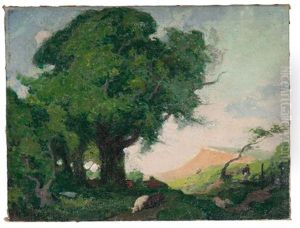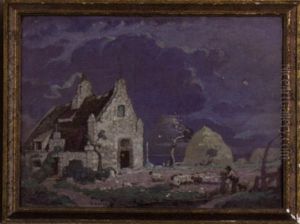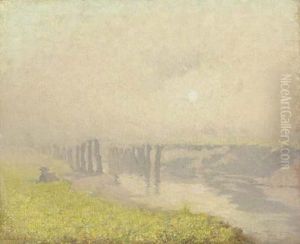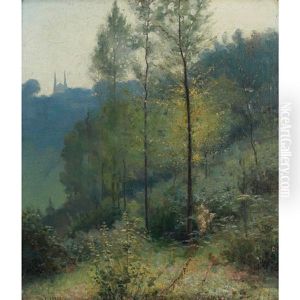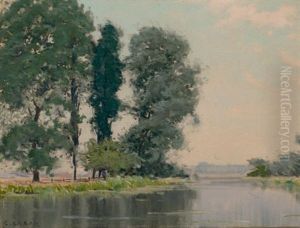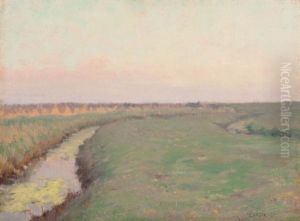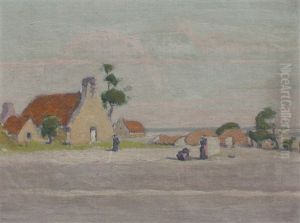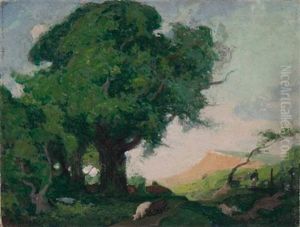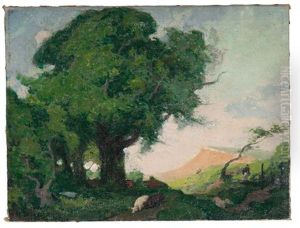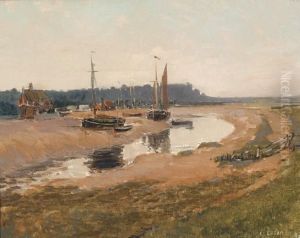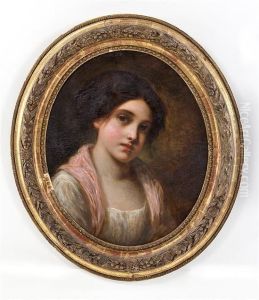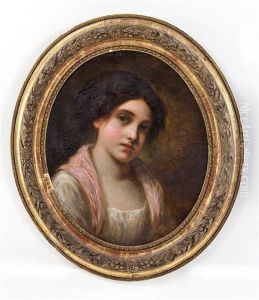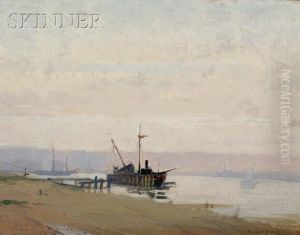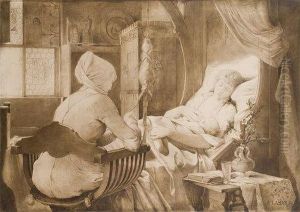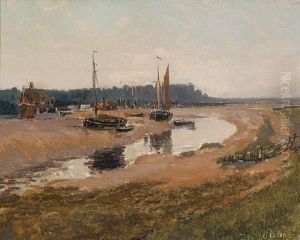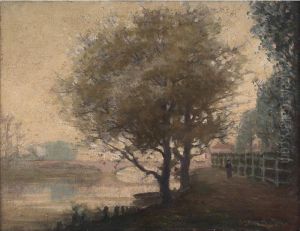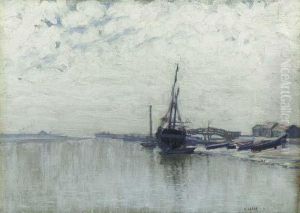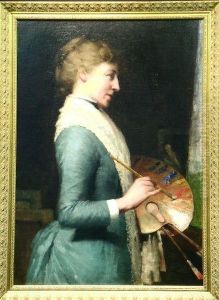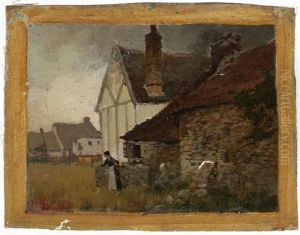Charles Augustus C. Lasar Paintings
Charles Augustus C. Lasar was an American painter who was born on November 28, 1856, in Baltimore, Maryland. He was known for his impressionist landscapes, genre scenes, and figure paintings. Lasar's work was influenced by his time in Europe, particularly in France, where he studied and later taught.
Lasar began his art education at the Maryland Institute College of Art in Baltimore. Seeking to further his training, he moved to Paris, which was the center of the art world at the time. He studied at the prestigious École des Beaux-Arts under Jean-Léon Gérôme, a well-known and respected figure in the academic art world of the late 19th century. Lasar also took lessons from other prominent artists such as Gustave Boulanger and Jules Joseph Lefebvre.
During his time in Paris, Lasar became associated with the American art colony in the village of Giverny, which was famously home to Claude Monet. The impressionist movement, which was gaining prominence during this period, had a significant impact on Lasar's work. He adopted the movement's characteristic loose brushwork and vibrant color palette, which can be seen in many of his landscape paintings.
Lasar exhibited his work at various salons and galleries in Paris, and he was also a regular participant in the Paris Salon, a prestigious annual exhibition. His paintings received positive reviews and were collected by art patrons in both Europe and the United States. In addition to painting, Lasar was dedicated to teaching and shared his knowledge and techniques with a generation of young artists. He opened his own art school in Paris, where he instructed students in both traditional academic methods and the newer impressionist style.
Charles Augustus C. Lasar eventually returned to the United States, where he continued to paint and exhibit his work. He was a member of several art organizations, including the Society of American Artists and the National Academy of Design.
Lasar's artistic legacy is marked by his ability to blend traditional academic training with the innovations of impressionism, creating a body of work that was both technically proficient and visually compelling. He passed away on May 18, 1936, in New York City. Today, his paintings can be found in the collections of various museums and are appreciated by both art historians and collectors for their contribution to American impressionism and the cross-cultural exchange between American and European art during the late 19th and early 20th centuries.
